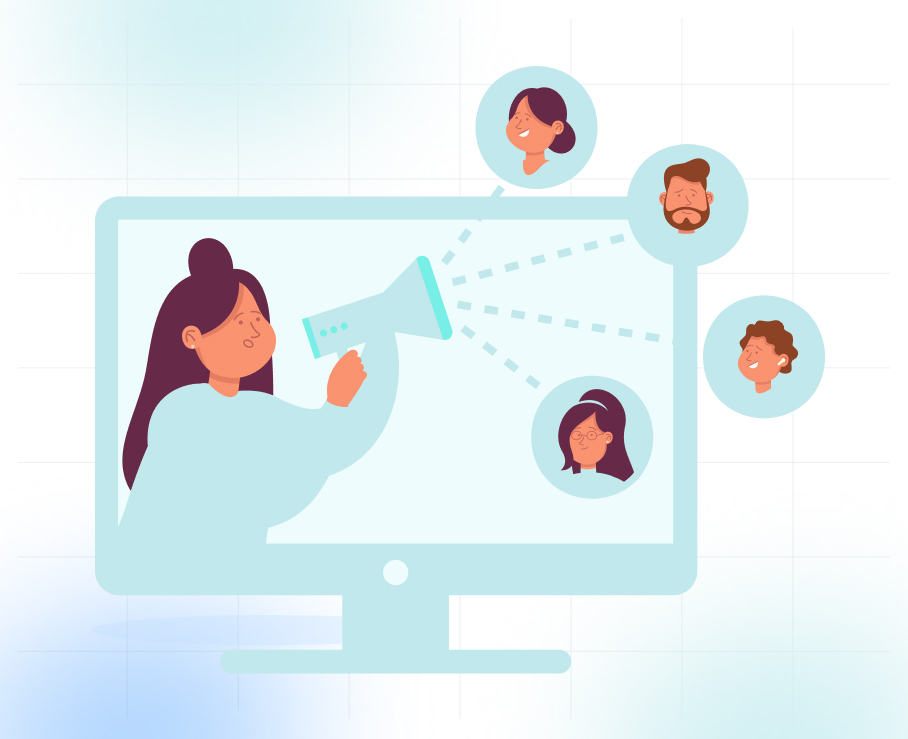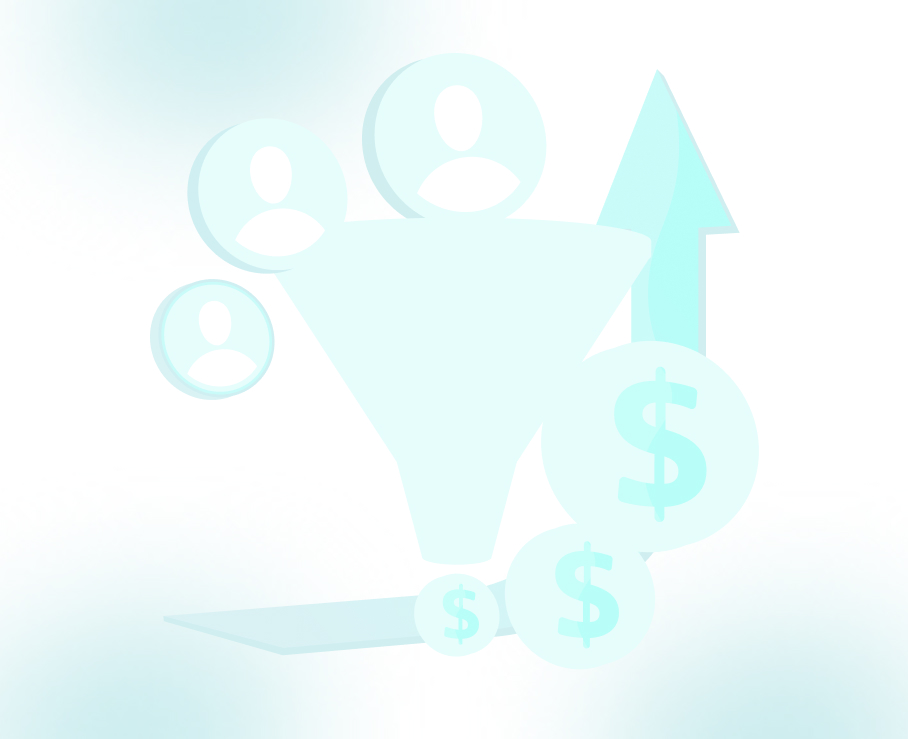
Effective Strategies for Follow-Up with Clients and Leads

In B2B sales, the initial contact is just the start. The challenge lies in nurturing that interest and guiding the prospect toward a decision. Effective follow-up focuses on timing, personalization, and delivering value without overwhelming the prospect.
Sales professionals often struggle to balance persistence and respect for the prospect’s time. Too many follow-ups can seem pushy, too few can lead to missed opportunities. The key is finding the right rhythm.
This guide will explore strategies to help you master follow-up, turning interest into lasting partnerships. From personalized messages to choosing the right communication channels, these techniques will ensure effective engagement at every stage of the sales journey.
Why Your Business Needs a Follow-Up Strategy?
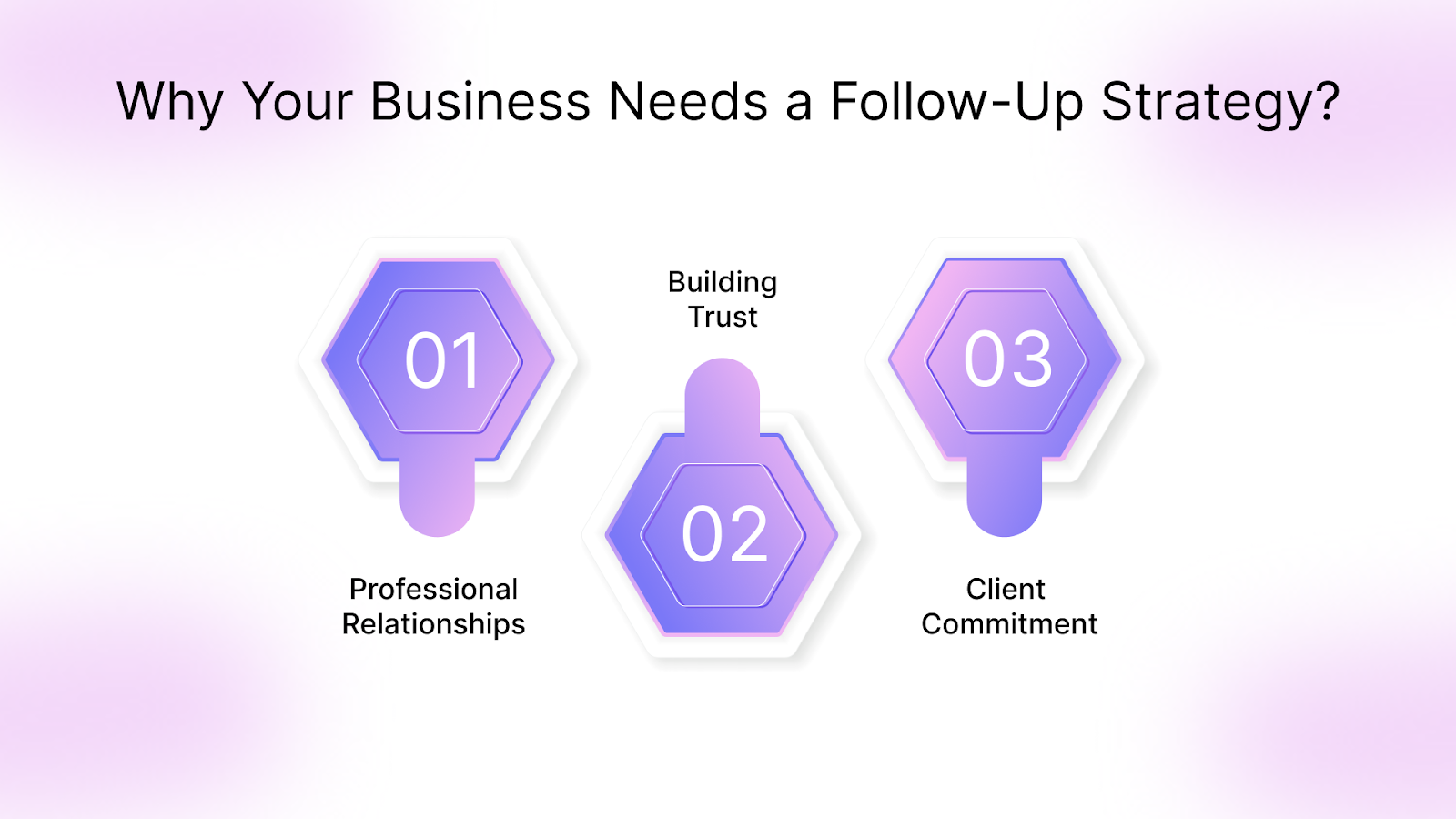
You’ve sent that reminder email, but did it truly stand out? Is your email:
- Nurturing professional relationships
- Building trust
- Demonstrating your commitment to your client’s success
A well-crafted follow-up strategy is essential for turning prospects into long-term clients. It’s not just about reminding prospects; it’s about establishing a thoughtful, well-timed connection that aligns with your clients’ needs and guides them towards making a decision.
When you follow up consistently and thoughtfully, you show your clients that you care about their needs and are dedicated to solving their challenges. This builds trust, encourages loyalty, and transforms a one-time lead into a repeat client.
Follow-ups also guide leads through the sales funnel, answering lingering questions and addressing concerns, which helps prospects move closer to making a decision.
Recommended: Top 8 Strategies for Successful Targeted Lead Generation.
So, what can you do to ensure that your follow-up emails are effective? Let's dive into strategies that can help turn every follow-up into an opportunity for growth.
4 Easy Strategies to Follow Up Effectively
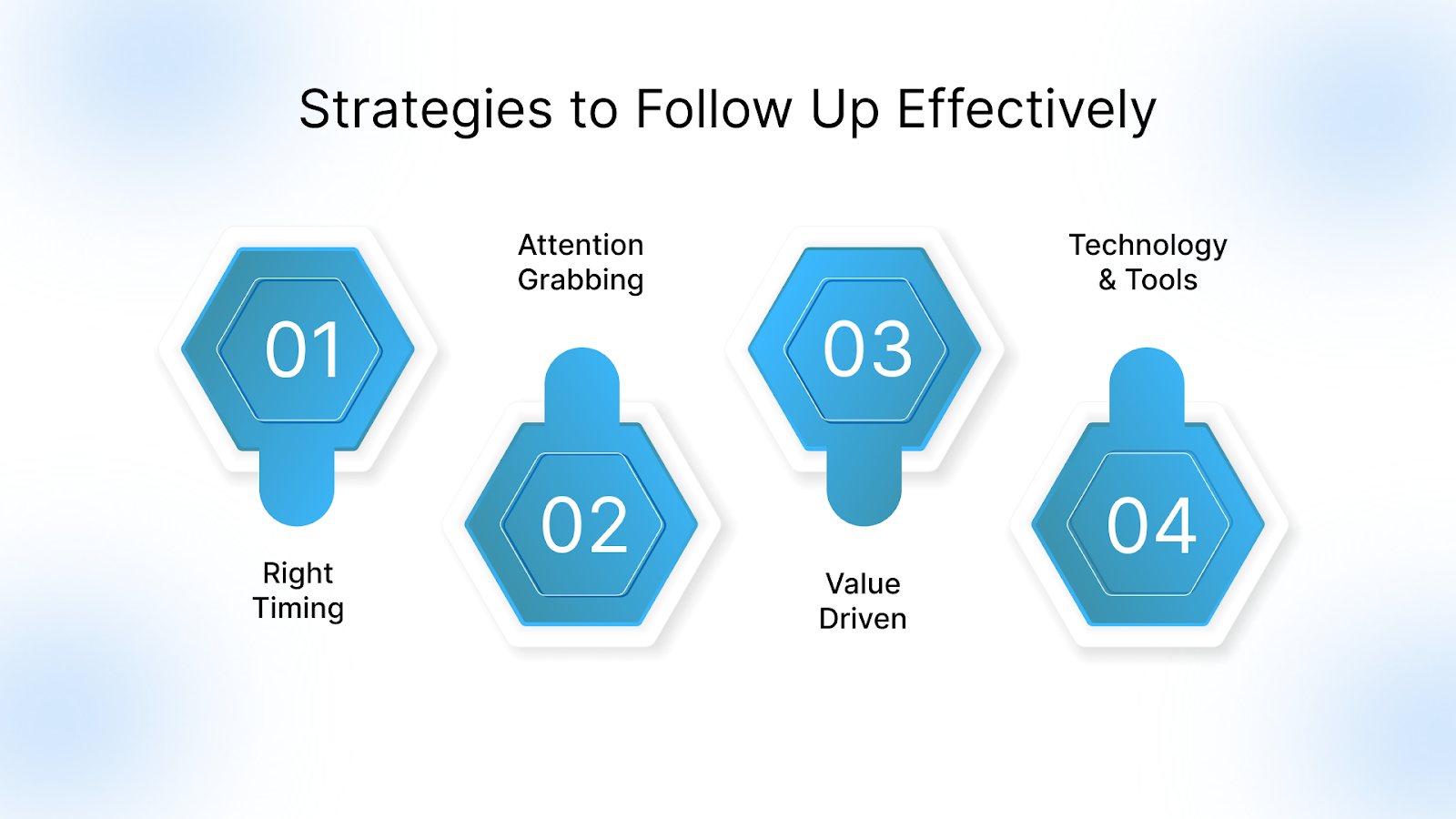
Following up with new clients after the initial contact is often challenging. Many businesses struggle with how to maintain momentum without being too aggressive.
A common question is if you should follow up immediately or wait for the client to reach out.
The key is balancing persistence with respect for the prospect's time. By applying effective, straightforward strategies, you can improve your follow-up and ensure valuable opportunities aren't overlooked.
1. Finding the Right Moment to Follow Up
The timing of your follow-up can greatly impact the outcome. A well-timed message can reignite interest and move leads forward, while a poorly timed one can stall conversations altogether.
Right after the first touchpoint? Follow up within 24 hours after the first touchpoint with a quick thank-you email or recap. This shows professionalism, reinforces key takeaways, and keeps your name at the top of your prospect's mind while they’re still thinking about the conversation.
Spacing Your Follow-Ups:
Once you’ve sent your first follow-up, space out subsequent touchpoints appropriately. For example:
- Second Follow-Up: 3-5 days after the initial message.
- Third Follow-Up: If no response, wait a week. For high-intent leads, you can follow up more frequently without becoming intrusive.
A thoughtful follow-up strategy strikes the perfect balance — persistent enough to stay relevant but respectful sufficient to maintain a positive relationship.
For businesses looking to streamline and optimize their follow-up processes, TLM's (The Lead Market) multi-touch campaigns can help maintain momentum and increase conversion rates effectively.
2. Crafting Your Follow-Up Messages to Get Your Prospects' Attention
Your follow-up message is your opportunity to make a lasting impression, regardless of how you first connected, through a face-to-face meeting or an online introduction
Let's break down how you can write follow-up messages that stand out.
Create Clear, Engaging Subject Lines
The subject line is your first—and often only—chance to get the prospect’s attention. Make it clear, specific, and relevant.
For example, instead of a vague “Follow-Up,” try something more focused, like “Follow-Up: Key Points from Our Discussion on (Date).” This gives the recipient a reason to open your email.
Want to improve your email outreach strategy? Check out TLM’s guide on effective targeted email marketing for insights on how to craft high-converting email campaigns that capture attention and drive engagement.
Personalize the Content
Personalization is essential for making your follow-up messages stand out. Emails require a personal touch, and instead of generic messages, reference specific details from your conversation, such as challenges they’re facing, goals they want to achieve, or pain points they need help with.
This shows you’re listening and genuinely invested in solving their unique problems. Tailoring your message to their specific needs builds trust and positions your offering as the best solution.
For example, if a potential client mentioned struggling with inefficient software tools during your last conversation, you could tailor your follow-up by saying something like,
"I remember you mentioned that your team is having trouble with software inefficiencies. Our solution can streamline those processes, saving you both time and resources. Let’s schedule a demo to show you how."
This small but meaningful personalization shows that you are focused on solving their specific issue.
Incorporate Clear Calls-to-Action (CTAs)
Every follow-up should have a clear, actionable next step, such as scheduling a call, reviewing a proposal, and taking a demo. The CTA should be concise and easy to follow.
For instance, “Click here to schedule a demo” or “Let me know if you'd like to proceed with the proposal.”
Once you’ve crafted a compelling message, it’s time to think about how to provide real value in your follow-ups. Offering more than just a sales pitch is what truly sets your follow-ups apart.
3. Standing Out by Providing Value in Your Follow-Ups
Your follow-up should center around providing real value to your client. Sharing meaningful insights and helpful resources strengthens your relationship and demonstrates a genuine investment in their success.
Aligning Value with Client Needs
Each follow-up should address the specific needs or concerns your client has expressed.
- If they’re looking for efficiency, send them a case study that highlights how your product can help them achieve that goal.
- If they need more details on how your service saves time or cuts costs, share relevant insights or examples.
Sharing Helpful Resources
To further add value, consider including helpful resources such as articles, whitepapers, or success stories.
For example, if a client mentioned a challenge you know your product can solve, send them a relevant article or case study that showcases a real-world solution. This demonstrates expertise and helps keep them engaged.
Building Trust Through Meaningful Interactions
Consistency is crucial for building trust. Regularly provide helpful content and check in, not just to sell, but to genuinely support your clients.
Every thoughtful follow-up reinforces your commitment to a long-term relationship, beyond just closing a deal.
Also read: When It Comes to Closing Bigger & Better Deals, It’s Quality That Matters.
Now that you’ve provided value, it’s time to think about how to connect with your potential clients using multiple communication channels
4. Technology and Tools to Streamline Your Follow-Ups
Gone are the days of juggling multiple leads and trying to track every follow-up manually. With everything moving online, managing follow-ups can get overwhelming. Services like TLM help you stay organized, streamline communication, and make sure no lead falls through the cracks. With everything moving online, managing follow-ups can quickly become overwhelming.
At TLM, we focus on manual follow-up management with real-time tracking to keep your sales pipeline efficient and effective. Let’s explore how the right approach and tools can streamline your follow-up efforts.
- Real-Time Reporting and Dashboards: To ensure timely and effective follow-ups, TLM provides real-time reporting that allows you to track the status of each lead. These tools help you see where each prospect is in the sales funnel, so you can prioritize follow-ups that are most likely to convert.
- Personalized Email Follow-Ups: TLM emphasizes personalized follow-up emails that are tailored to the prospect's specific needs and challenges. This ensures that each lead receives relevant and timely communication, driving higher engagement and better results.
- Tracking and Monitoring Outcomes: To refine your follow-up strategy, it’s crucial to monitor key metrics like response rates, conversion rates, and meeting bookings. At TLM, our real-time tracking tools provide insights into what’s working, allowing you to adjust and optimize your follow-up approach for maximum impact.
Implementing these strategies improves your follow-up process, helping prospects remember you and keeping conversations going without overwhelming them. However, their effectiveness is hindered if you overlook common mistakes in lead follow-up. Let’s explore these pitfalls.
Avoiding Common Follow-Up Mistakes
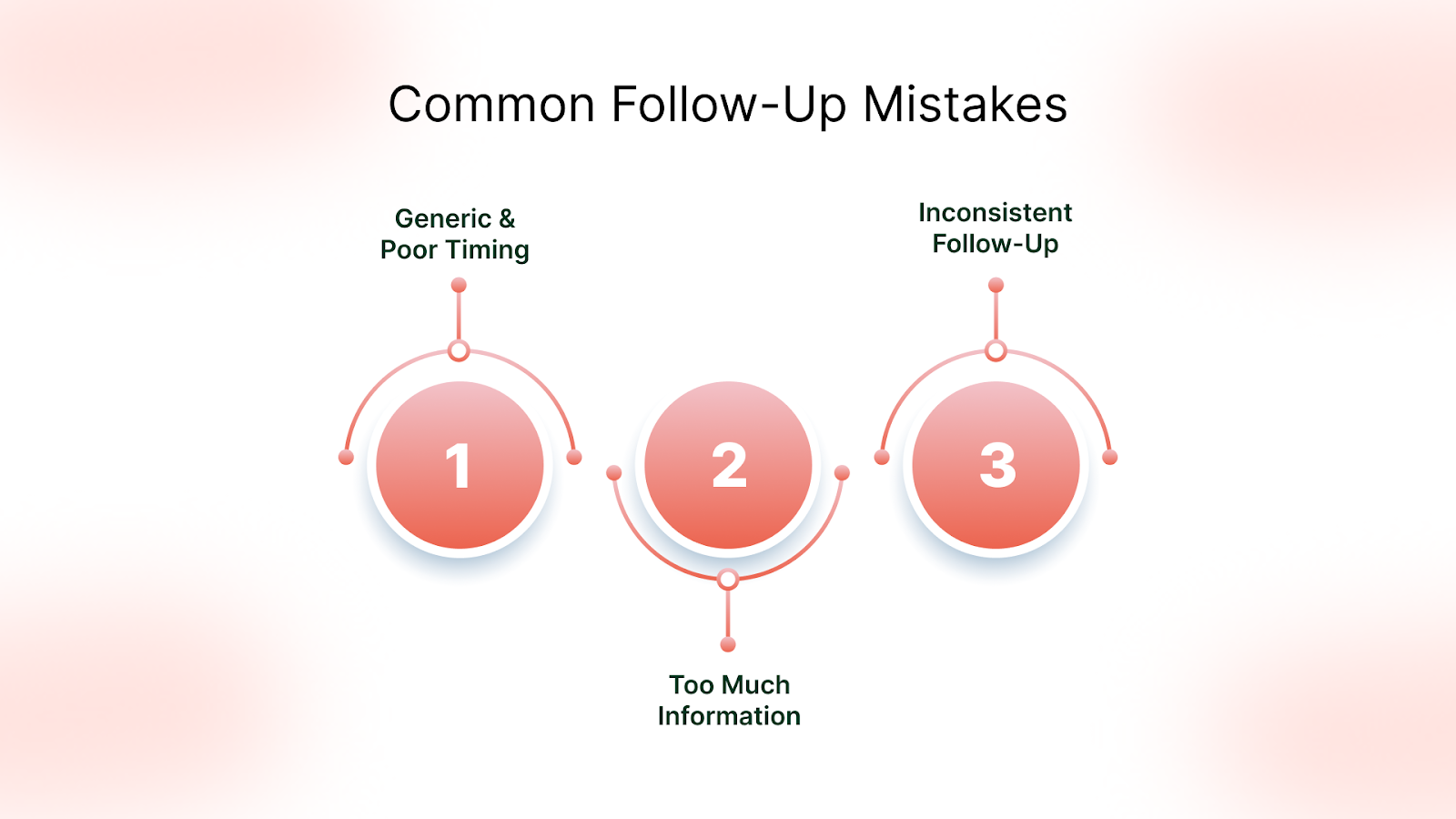
Even the best follow-up strategies can fall short if common mistakes creep in. Avoid these pitfalls to keep your prospects engaged and move deals forward smoothly.
1. Lack of Personalization and Poor Timing:
Sending generic, one-size-fits-all follow-ups or reaching out at the wrong moment can quickly turn prospects away. Make sure every follow-up is personalized, timely, and relevant to the specific lead’s needs and previous interactions.
2. Overwhelming Prospects with Too Much Information:
While it’s tempting to include all the details to convince your prospect, bombarding them with lengthy emails or excessive content can cause disengagement. Keep your messages focused, concise, and easy to digest to maintain interest and clarity.
3. Inconsistent and Sporadic Follow-Up Efforts:
Inconsistency in following up can kill momentum and lose leads. Establish a clear, structured follow-up schedule and stick to it—regular, well-timed touchpoints nurture relationships and increase the chance of conversion.
To avoid common follow-up pitfalls and enhance effectiveness, partner with TLM. Our expertise helps you:
- Target the Right Prospects: Ensure your messages are personalized and reach the right audience promptly, reducing the risk of generic outreach.
- Maintain a Structured Follow-Up Cadence: With our appointment scheduling services, you can stay organized and consistent, avoiding missed opportunities or overwhelming leads.
- Streamline Your Sales Process: Leverage TLM’s proven strategies to nurture relationships effectively, boosting both conversion rates and revenue growth.
Also read: A Comprehensive Overview on Inside Sales with Best Strategies and Insights.
Businesses can struggle to scale their efforts or manage a large volume of leads. TLM Inside Sales can help ease the lead generation process.
How Can TLM Inside Sales Supercharge Your Follow-Up Strategy?

TLM Inside Sales specializes in driving meaningful sales conversations by delivering high-quality sales-qualified leads (SQLs) and setting up effective appointments. We offer a developed, comprehensive approach to follow-up that integrates both strategy and technology. Here's how we can help elevate your follow-up efforts:
- Tailored Email Scripts: We create personalized follow-up email scripts based on your Ideal Customer Profile (ICP), ensuring your messages resonate with your prospects' unique challenges and needs.
- Real-Time Campaign Management: Our advanced systems provide complete visibility into your follow-up campaigns, allowing you to track metrics and manage leads efficiently in real time
- Industry Expertise: With expertise in MSPs, staffing, technology, and manufacturing, TLM creates follow-up strategies tailored to your industry to generate higher-quality leads and appointments.
Conclusion
To wrap up, mastering follow-up strategies is crucial for transforming leads into loyal clients and driving business growth.
Focus on timing, crafting personalized messages, adding value, and utilizing the right tools to keep prospects engaged throughout the sales process. No matter your industry, effective follow-up is vital for long-term success.
Take your time evaluating your current follow-up approach and implement these strategies to see immediate improvements in client engagement and conversion rates.
At TLM Inside Sales, we don't just generate leads; we focus on delivering the right leads, at the right time, through the right channel.
Want to master follow-up and boost client engagement?
FAQs
1. How often should I follow up with a client?
A consistent cadence of one to two follow-ups per month works well for most businesses. Test different frequencies to determine what works best for your clients.
2. What should I include in a follow-up message?
A clear subject line, a personalized message, and a strong CTA are essential. Make sure that your follow-up adds value and addresses the recipient’s needs.
3. How can I avoid being perceived as pushy?
Focus on providing value, addressing client needs, and being respectful of their time. Avoid sending too many follow-ups in a short period.
4. How can I measure the effectiveness of my follow-up strategies?
Track metrics like response rates, conversion rates, and engagement levels to assess your follow-up performance and make data-driven improvements.


